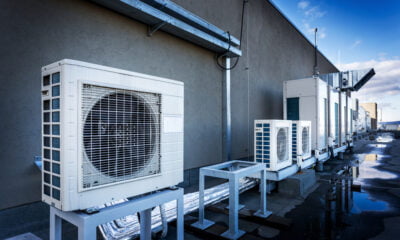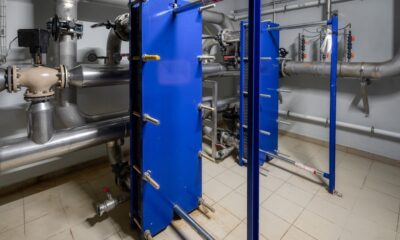

Energy
How Plastering Can Make Your Home More Energy Efficient
There is a certain romance about old houses particularly if you’re really into your history. However draughty chimneys, old single-glazed windows and old boilers can result in your home not being as energy efficient as you’d hope and naturally you’d like to make your home more comfortable without sacrificing the historical appeal of the house that seduced you in the first place. Houses built before the 1930’s would have solid walls instead of cavity walls. Cavity walls are made up of two layers with a small gap between them, whereas solid walls have no gap so they are prone to letting more heat through. As a result, solid walls can be harder to insulate but there are measures you can take to maximise the insulation of the walls.
Perhaps the most effective solution is to have your house fully plastered. Judge Plastering, for example, provide Venetian plastering for Surrey which is a stylish alternative to painting, wallpapering and tiling. Plastering can provide another layer on top of your walls which can be effective for keeping heat in during the cold winter months.
We all know expensive it is to run a boiler which is why it seems incredibly wasteful when you consider that 35% of your heat will escape through the walls and through the gaps that are in and around your windows and doors. If you can slow this down and minimise the amount of heat that escapes from your house then you can dramatically reduce your energy bills in the process. Cavity walls are incredibly easy to insulate as they can be injected with a special insulating material which slows down the movement of heat across it. Whereas solid walls can be more complicated as there is no cavity to be filled which means you can only insulate internally or externally. External insulation can be very expensive and also requires cladding. Which is why internal plastering is usually the more viable and sensible option.
Many people rarely go up into their loft or attic and therefore don’t usually consider it when wondering why their energy bills are so high. What they might not realise is that 25% of your heat can escape through your roof. This should hardly come as a surprise seeing as heat rises and an uninsulated roof only speeds up the process. This is where you should have the interior of your loft space plastered as well to help contain the heat. You can decide whether you want a cool loft of a warm loft depending on the thickness of the plaster.
If your loft space is only used for storage then you would be better off with a cool loft as you won’t spend much time up there where it will be cold in the winter. In the summer you’ll be thankful that some of the natural heat is escaping and not trapped by the thicker plaster.


 Environment10 months ago
Environment10 months agoAre Polymer Banknotes: an Eco-Friendly Trend or a Groundswell?

 Environment12 months ago
Environment12 months agoEco-Friendly Home Improvements: Top 7 Upgrades for 2025

 Features9 months ago
Features9 months agoEco-Friendly Cryptocurrencies: Sustainable Investment Choices

 Features10 months ago
Features10 months agoEco-Friendly Crypto Traders Must Find the Right Exchange





























